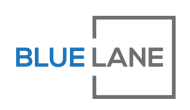Meshii Wifi - the future of decentralised internet

Blue Lane Holdings is working with Meshii Group Ltd to deliver a new decentralised wifi network for the UK. This is an exciting business venture that promises to revolutionise how you access the internet.
The internet, and how we utilise it, is continuously changing and evolving. Before the internet, there was an Advanced Research Projects Agency Network (ARPNET). ARPNET was created by the US Government in 1958 during the cold war. It was a linked computer network and can be traced back to the beginning of the internet as we know it. The development of ARPNET was spurred on by military concerns that the Soviets might use their jet bombers to launch surprise nuclear attacks against the United States.
By the 1960s, a system called SAGE (Semi-Automatic Ground Environment) had already been built and used computers to track incoming enemy aircraft. The system included 23 “direction centres,” each with a massive mainframe computer that could track 400 planes, distinguishing friendly aircraft from enemy bombers. It wasn’t until much later in 1973 when the University College of London and Royal Radar Establishment (Norway) connected to the ARPNET, and the term ‘Internet’ was born.
Shortly after this, in 1974, the first ISP (Internet Service Provider) was set up and created a commercial version known as Telenet. Despite being available, by 1987 there were still very few people accessing the internet, with only 20,000 users. In 1989, the first commercial dial-up Internet provider, world.std.com, was launched. Dial-up connections used analogue phone lines to connect and decoded audio signals into data. For those who remember dial-up, one considerable downside was that the phone and internet used the same line, so it would leave you having to disconnect from the internet to make a phone call.
By 1993 The number of websites on the world wide web had still only reached 600 whilst the number of connected computers had increased considerably to 2 million.
After the introduction of broadband in the late 1990s, dial-up became less prevalent. Broadband offered Internet access via cable, DSL, wireless broadband, mobile broadband, satellite and Fibre. Replacing dial-up access in many parts of the world because it offered faster (but not necessarily cheaper) connections.
By January 2021, a whopping 4.66 billion people were now connected to the internet, more than half of the global population.
So, what will the internet look like in the future?
Since its embryonic creation in 1958, the internet has proven to be increasingly valuable in connecting people across the globe and sharing data quickly. However, with over 1.5 million low-income UK households without internet access, should the focus now be on how to level the playing field and enable everyone to have internet access?
Ofcom UK-report mobile data usage increases 20% year-on-year with over £1billion per year in revenue from out-of-bundle-data. Exceeding your data allowance can be expensive, leaving you with a shock when your monthly phone bill is due. It is estimated that 40% of 18-24-year-olds regularly exceed data plans, showing that internet connectivity, which is essential for learning, is hitting students the hardest.
At Meshii, we believe that creating a decentralised Wi-Fi network will completely revolutionise the internet and how we access it. The Meshii Wi-Fi network will consist of connected devices sharing unused internet onto the Meshii Public Wi-Fi for their neighbours or visitors to use. This will enable those who cannot afford an expensive monthly subscription to pay only for the internet they use on a Pay as you Go basis.
Meshii Wi-Fi seeks to challenge the current centralised norms by providing the structure and governance for a community-governed, decentralised Public Wi-Fi network for all. The decentralised system has been designed to distribute power, control, and money to the local community, connecting those who need it the most.
By decentralising the network, the public Wi-Fi cannot be turned off by a single internet provider ensuring the service remains up and running even in the event of an ISP suffering from an outage.
It’s no shock that the internet is certainly here to stay, with the market anticipated to grow considerably over the coming years. The global broadband market size is estimated to reach $875.1 billion by 2030 from $419.4 billion in 2022. Cementing the importance of a fair, evenly distributed internet service.
